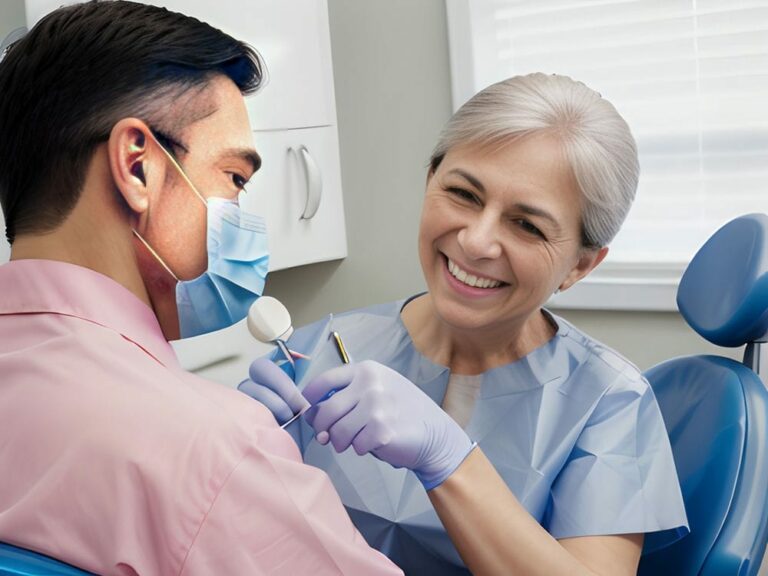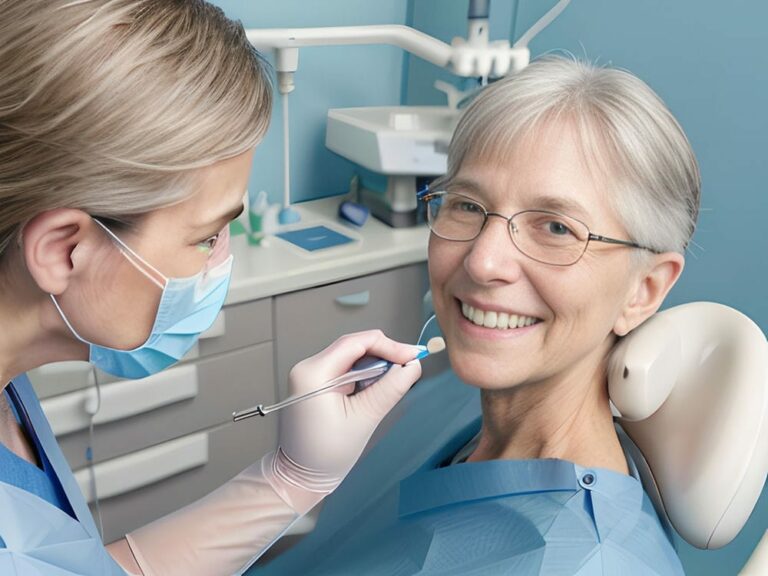The Role of Tissue Engineering in Advancing Dental Medicine
The field of tissue engineering has been revolutionizing dental medicine by providing innovative solutions for restoring and regenerating damaged or lost dental tissues. Tissue engineering combines principles from biology, engineering, and materials science to develop biomimetic strategies that promote the growth and repair of dental tissues. This interdisciplinary approach has led to significant advancements in dental medicine, offering new possibilities for patients with oral health issues.
One area where tissue engineering has shown great promise is in dental pulp regeneration. Dental pulp is the soft tissue located inside the tooth that contains blood vessels, nerve fibers, and connective tissue. When the dental pulp becomes infected or damaged due to decay or trauma, it can lead to pain and tooth loss. Traditional treatment options involve removing the infected pulp and filling the space with an inert material. However, this approach does not restore the natural function of the tooth.
Tissue engineering offers a more biologically-based approach by utilizing stem cells and scaffolds to regenerate dental pulp tissue. Stem cells have the ability to differentiate into various cell types, including odontoblasts, which are responsible for producing dentin, a major component of teeth. By combining stem cells with a suitable scaffold material that mimics the natural extracellular matrix of dental pulp tissue, researchers have been able to successfully regenerate functional dental pulp in preclinical studies. These advancements hold great potential for developing effective treatments that can restore both structure and function to damaged teeth.
In summary, tissue engineering has emerged as a powerful tool in advancing dental medicine. Its application in dental biomaterials and techniques such as dental pulp regeneration using scaffolds holds promise for improving treatment outcomes and patient quality of life. With further research and development, tissue engineering may pave the way for more personalized and targeted therapies in dentistry, bringing us closer to achieving optimal oral health for all individuals.
Innovations in Biomaterials for Dental Tissue Engineering
In recent years, there have been significant advancements in the field of dental tissue engineering, particularly in the development of innovative biomaterials. These biomaterials play a crucial role in promoting dental regeneration and tissue repair. One key area of focus has been on creating scaffolds that mimic the natural extracellular matrix of dental tissues, providing a supportive environment for cell growth and tissue regeneration.
The use of biomaterials in dental tissue engineering has allowed researchers to create scaffolds with tailored properties, such as porosity, mechanical strength, and biocompatibility. These scaffolds serve as a framework for cells to attach and grow, facilitating the regeneration of damaged or lost dental tissues. By carefully selecting the composition and structure of these biomaterials, researchers can enhance their ability to promote cell adhesion, proliferation, and differentiation.
Furthermore, advancements in biomaterial technology have led to the development of bioactive materials that can actively stimulate tissue repair processes. For example, bioactive ceramics such as hydroxyapatite can release calcium ions that promote mineralization and dentin formation. Similarly, growth factors incorporated into biomaterials can stimulate cell migration and differentiation, further enhancing tissue regeneration.
In conclusion
Overall, the innovations in biomaterials for dental tissue engineering have opened up new possibilities for dental regeneration and tissue repair. The ability to create customized scaffolds with tailored properties allows for more effective restoration of damaged or lost dental tissues. Furthermore, the incorporation of bioactive materials and growth factors enhances the regenerative potential of these biomaterials. With continued research and development in this field, we can expect further advancements that will revolutionize dental medicine and improve patient outcomes.
Harnessing Stem Cells for Regenerative Dentistry
In recent years, dental tissue engineering research has shown great promise in harnessing the regenerative potential of stem cells for dental regeneration and tissue repair. Dental stem cells are a type of adult stem cell that can be found in various dental tissues, such as the dental pulp, periodontal ligament, and dental follicle. These cells have the ability to differentiate into different types of cells found in teeth and surrounding tissues, making them an attractive option for regenerative dentistry.
One key area of focus in dental tissue engineering techniques is the isolation and characterization of dental stem cells. Researchers have developed various methods to isolate these cells from extracted teeth or other dental tissues. Once isolated, these stem cells can be expanded in culture and then induced to differentiate into specific cell types required for tissue repair.
Furthermore, researchers are exploring different strategies to enhance the regenerative potential of dental stem cells. This includes using growth factors or biomaterial scaffolds to provide a supportive environment for cell growth and differentiation. By combining these approaches, researchers aim to optimize the effectiveness of dental stem cell therapy for repairing damaged or lost dental tissues.
In conclusion, dental tissue engineering research has made significant advancements in harnessing the regenerative potential of dental stem cells. The isolation and characterization of these cells have paved the way for innovative techniques that promote tissue repair in dentistry. With further research and development, it is expected that these techniques will revolutionize the field of regenerative dentistry and improve patient outcomes.
Enhancing Oral Health through Tissue Engineering Techniques
Tissue engineering has emerged as a promising field in dental medicine, offering innovative solutions for enhancing oral health. Dental tissue engineering applications have made significant advancements in recent years, with researchers exploring new techniques to regenerate and repair damaged dental tissues. These advancements hold great potential for improving patient outcomes and revolutionizing the field of regenerative dentistry.
One area of focus in dental tissue engineering is the development of biomaterial scaffolds that can support the growth and differentiation of dental cells. These scaffolds provide a three-dimensional framework that mimics the natural environment of dental tissues, promoting cell attachment, proliferation, and tissue formation. By incorporating bioactive molecules and growth factors into these scaffolds, researchers aim to enhance the regenerative potential of dental cells and accelerate tissue repair processes.
However, despite these dental tissue engineering advancements, there are still challenges that need to be addressed. One challenge is ensuring the long-term stability and functionality of regenerated tissues. It is important to develop strategies that promote proper integration of regenerated tissues with surrounding native tissues to ensure their durability and functionality over time.
Another challenge lies in translating these advancements from the laboratory setting to clinical practice. While promising results have been achieved in preclinical studies, further research is needed to validate the safety and efficacy of these techniques in human patients. Additionally, cost-effectiveness and accessibility issues need to be considered when implementing these advanced technologies in routine clinical practice.
In summary, dental tissue engineering holds immense potential for enhancing oral health through regenerative dentistry techniques. Advancements in biomaterial scaffolds and growth factor incorporation have paved the way for innovative approaches towards repairing damaged dental tissues. However, challenges such as long-term stability and translation from lab to clinic remain areas for further research and development.
Advancements in Dental Implants using Tissue Engineering Principles
Over the years, dental implants have become a popular and effective solution for replacing missing teeth. However, traditional dental implants have limitations, such as the risk of infection and the inability to fully integrate with surrounding tissues. This has led researchers to explore tissue engineering principles to develop advanced dental implant technologies that address these challenges.
One key innovation in dental tissue engineering is the development of bioactive implant materials. These materials are designed to promote cell attachment and proliferation, as well as facilitate proper integration with the surrounding tissues. By incorporating bioactive molecules and growth factors into the implant material, researchers aim to enhance tissue regeneration and improve long-term stability.
Another advancement in dental implant technology is the use of biomimetic scaffolds. These scaffolds mimic the natural structure and composition of dental tissues, providing a supportive framework for cell growth and tissue formation. By using these scaffolds in combination with bioactive materials, researchers can create an optimal environment for dental tissue regeneration.
In addition to innovative materials and scaffolds, researchers are also exploring new strategies for enhancing osseointegration—the process by which the implant fuses with the surrounding bone. One strategy involves using biophysical cues, such as electrical stimulation or mechanical loading, to promote osteogenic differentiation and accelerate bone formation around the implant.
These advancements in dental tissue engineering hold great promise for improving the success and longevity of dental implants. By utilizing innovative materials, biomimetic scaffolds, and strategic strategies to enhance osseointegration, researchers are paving the way for more reliable and functional dental implants. With further research and development, these technologies have the potential to revolutionize dental medicine by providing patients with safer, longer-lasting solutions for tooth replacement.
Bone Regeneration and Repair: Applications of Tissue Engineering in Dentistry
Bone Regeneration and Repair: Applications of Tissue Engineering in Dentistry
Tissue engineering has also made significant advancements in the field of bone regeneration and repair in dentistry. Traditional methods for treating bone defects, such as autografts or allografts, have limitations, including limited availability and potential complications. Dental tissue engineering therapies offer a promising alternative by providing customized solutions for bone regeneration.
One key application of dental tissue engineering is the use of stem cells to promote bone healing. Stem cells can differentiate into various cell types, including osteoblasts, which are responsible for bone formation. By isolating and culturing these stem cells from the patient’s own tissues or other sources, researchers can create cell-based therapies that enhance bone regeneration outcomes. These stem cells can be combined with biomaterials and growth factors to create a three-dimensional scaffold that supports the growth of new bone tissue.
Furthermore, dental tissue engineering holds great promise for future advancements in regenerative medicine. Researchers are investigating the use of innovative materials, such as biocompatible polymers or ceramics, to create scaffolds that mimic the structure and composition of natural bone tissue. By incorporating bioactive molecules and growth factors into these scaffolds, they can further enhance the regeneration process. Additionally, new techniques like 3D printing allow for precise fabrication of complex structures that promote optimal tissue integration.
In summary, dental tissue engineering therapies have revolutionized the field of bone regeneration and repair in dentistry. By harnessing the potential of stem cells and innovative materials, researchers have been able to develop customized solutions that improve outcomes for patients with bone defects. With continued research and development, dental tissue engineering has a bright future in regenerative medicine by providing more effective treatments for restoring lost or damaged dental tissues.
Understanding Biocompatibility in Dental Tissue Engineering
Dental tissue engineering has significant implications for dentistry, offering innovative solutions for various dental conditions and challenges. One key implication is the potential to regenerate dental tissues, such as enamel, dentin, and cementum. Traditional methods for treating tooth decay or damage often involve restorative materials like fillings or crowns, which may have limitations in terms of durability and aesthetics. Dental tissue engineering aims to overcome these limitations by developing techniques to regenerate natural dental tissues. By combining stem cells, biomaterials, and growth factors, researchers are working towards creating biocompatible scaffolds that can promote the growth of new dental tissues and restore the natural structure and function of teeth.
Another important implication of dental tissue engineering is the potential to enhance implant success rates. Dental implants are commonly used to replace missing teeth, but they rely on sufficient bone volume and quality for successful integration. However, patients with inadequate bone volume often require additional procedures like bone grafting before implant placement. Dental tissue engineering offers alternative approaches by using biomaterials and stem cells to regenerate bone in the implant site, eliminating the need for additional surgeries. These advancements could greatly improve patient outcomes by reducing treatment complexity and increasing implant success rates.
Furthermore, dental tissue engineering has implications for personalized medicine in dentistry. By using a patient’s own cells or tissues to create customized therapies, dental tissue engineering holds the potential to improve treatment outcomes while reducing risks of rejection or complications. This personalized approach allows dentists to tailor treatments specifically to each patient’s needs and characteristics, leading to more predictable results and better long-term outcomes.
Overall, dental tissue engineering has far-reaching implications for dentistry. From regenerating natural dental tissues to enhancing implant success rates and advancing personalized medicine approaches, this field is revolutionizing how we approach various oral health challenges. With ongoing research and development, it is likely that dental tissue engineering will continue to transform dentistry by providing more effective treatments with improved outcomes for patients.
Emerging Trends in Dental Medicine: The Future of Tissue Engineering
Dental tissue engineering is a rapidly evolving field with promising advancements and emerging trends. One of the key trends in dental medicine is the use of three-dimensional printing technology to fabricate customized scaffolds for tissue regeneration. This technology allows for precise control over the shape, structure, and composition of scaffolds, enhancing their biocompatibility and promoting better integration with natural tissues. Additionally, researchers are exploring the use of bioactive molecules, such as growth factors and signaling molecules, to enhance tissue regeneration and promote faster healing. These molecules can be incorporated into scaffolds or delivered through controlled-release systems to stimulate cell growth and differentiation.
Another emerging trend in dental tissue engineering is the development of smart biomaterials that can respond to physiological cues in the oral environment. These biomaterials have the ability to release therapeutic agents or adjust their properties based on changes in pH, temperature, or mechanical stress. For example, researchers are developing materials that can release antimicrobial agents when exposed to bacterial infection or adjust their stiffness in response to chewing forces. These smart biomaterials have the potential to improve treatment outcomes by providing targeted therapies and dynamically adapting to the oral environment.
Furthermore, advancements in stem cell research hold great promise for dental tissue engineering. Researchers are exploring various sources of stem cells for regenerating dental tissues, including dental pulp stem cells, periodontal ligament stem cells, and induced pluripotent stem cells. These stem cells can be isolated from patients’ own tissues or generated through reprogramming techniques. By harnessing the regenerative potential of these cells and understanding their differentiation capabilities, researchers aim to develop more effective strategies for tissue regeneration in dentistry.
As dental tissue engineering continues to advance, it holds great potential for revolutionizing dental medicine by offering innovative solutions for various oral health challenges. The integration of three-dimensional printing technology, bioactive molecules, smart biomaterials, and stem cell research will likely lead to more personalized and effective treatments. With ongoing research and development, dental tissue engineering has the potential to redefine the future of dental medicine, providing patients with improved outcomes, enhanced aesthetics, and long-lasting oral health.
Challenges and Opportunities in Dental Tissue Engineering Research
One of the key challenges in dental tissue engineering research is achieving optimal regeneration and integration of tissues with the surrounding oral environment. The mouth is a highly complex and dynamic environment, with constant exposure to saliva, bacteria, and mechanical stresses from chewing. Therefore, it is crucial for tissue-engineered constructs to withstand these challenges and maintain their functionality over time. Researchers are working on developing biomaterials that can mimic the natural properties of dental tissues and promote better integration with the host tissues.
Another challenge in dental tissue engineering is ensuring long-term stability and durability of tissue-engineered constructs. Dental restorations need to withstand daily wear and tear, as well as resist degradation caused by bacterial infection or acid erosion. Researchers are exploring strategies to enhance the mechanical strength and resilience of these constructs, such as incorporating reinforcing materials or using advanced fabrication techniques.
Despite these challenges, there are also numerous opportunities in dental tissue engineering research. One such opportunity lies in the development of personalized treatments tailored to individual patients. By utilizing patient-specific data, such as 3D imaging or genetic information, researchers can create customized scaffolds or select appropriate stem cell sources for regenerating specific dental tissues. This personalized approach has the potential to improve treatment outcomes and reduce the risk of complications.
In conclusion, while there are challenges in dental tissue engineering research, such as achieving optimal integration with the oral environment and ensuring long-term stability of tissue-engineered constructs, there are also opportunities for personalized treatments that can revolutionize dental medicine. Through ongoing research and development efforts, researchers aim to overcome these challenges and harness the full potential of tissue engineering for enhancing oral health outcomes.
Case Studies: Success Stories in Dental Medicine through Tissue Engineering
Tissue engineering has made significant advancements in the field of dental medicine, leading to successful case studies that demonstrate its potential. One such success story is the regeneration of dental pulp tissue. Dental pulp is responsible for maintaining the vitality of teeth, and when damaged or infected, it can lead to tooth loss. Through tissue engineering techniques, researchers have been able to develop scaffolds that support the growth and differentiation of stem cells into functional dental pulp tissue. These regenerated tissues have shown promising results in restoring tooth functionality and reducing the need for invasive procedures like root canal treatments.
Another area where tissue engineering has shown promise is in the regeneration of periodontal tissues. Periodontal disease is a common condition characterized by inflammation and destruction of the supporting structures around teeth. Traditional treatment options often involve surgical procedures or artificial replacements, which may not provide long-term success. Tissue engineering offers an alternative approach by utilizing bioactive scaffolds and growth factors to promote the regeneration of periodontal tissues. Several studies have demonstrated successful integration of regenerated periodontal tissues with existing structures, leading to improved oral health outcomes.
Furthermore, tissue engineering has also made advancements in the field of dental implants. Dental implants are commonly used to replace missing teeth, but their long-term success relies on effective integration with surrounding bone tissues. Researchers have developed innovative strategies to enhance this integration through the use of biomaterials that mimic natural bone properties and promote cell adhesion and growth. These advancements have led to improved implant stability and reduced risk of complications, ultimately providing patients with more durable and functional tooth replacements.
These case studies highlight the potential impact of tissue engineering in revolutionizing dental medicine. By harnessing the power of regenerative medicine, researchers are paving the way for personalized treatments that can restore oral health with greater efficacy and longevity. With ongoing research efforts aimed at addressing challenges and optimizing techniques, tissue engineering holds great promise for improving dental care outcomes in the future
FAQs
Q: What is tissue engineering?,
A: Tissue engineering is a field of biomedical research that involves the creation of artificial tissues and organs to replace or repair damaged or diseased tissues in the human body.,
Q: How does tissue engineering apply to dental medicine?,
A: In dental medicine, tissue engineering aims to regenerate oral tissues, such as dental pulp, periodontal ligaments, and alveolar bone, to restore oral health and function.,
Q: What are the latest advances in tissue engineering for dental medicine?,
A: Some of the latest advances in tissue engineering for dental medicine include the use of stem cells, 3D printing technology, and biomaterials to create functional and biocompatible dental tissues.,
Q: How are stem cells used in tissue engineering for dental medicine?,
A: Stem cells, such as dental pulp stem cells and mesenchymal stem cells, can be isolated and grown in the laboratory to create dental tissues that can be implanted into the patient’s mouth to replace damaged or missing tissues.,
Q: What is 3D printing technology and how is it used in tissue engineering?,
A: 3D printing technology allows for the precise fabrication of complex structures layer by layer. In tissue engineering, it can be used to create scaffolds or frameworks that support the growth and development of new dental tissues.,
Q: What are biomaterials and how are they used in tissue engineering for dental medicine?,
A: Biomaterials are synthetic or natural materials that are used to support and enhance tissue regeneration. In dental medicine, biomaterials can be used as scaffolds or carriers for delivering cells or growth factors to stimulate tissue growth.,
Q: Can tissue engineering be used to regenerate dental pulp?,
A: Yes, tissue engineering techniques can be used to regenerate dental pulp, which is the soft tissue inside the tooth. By using stem cells and biomaterials, new dental pulp can be grown and implanted into the tooth to restore its function.,
Q: Can tissue engineering be used to regenerate periodontal ligaments?,
A: Yes, tissue engineering approaches can be used to regenerate periodontal ligaments, which are the connective tissues that attach teeth to the surrounding bone. By using stem cells and biomaterials, new periodontal ligaments can be grown and integrated with the tooth and bone.,
Q: Can tissue engineering be used to regenerate alveolar bone?,
A: Yes, tissue engineering techniques can be used to regenerate alveolar bone, which is the bone that supports the teeth. By using stem cells and biomaterials, new alveolar bone can be grown and integrated with the existing bone to restore the proper structure and function.,
Q: What are the potential benefits of tissue engineering in dental medicine?,
A: Tissue engineering has the potential to revolutionize dental medicine by providing more effective and long-lasting treatments for dental problems. It can help restore oral health and function, reduce the need for traditional dental prosthetics, and improve the overall quality of life for patients.




















